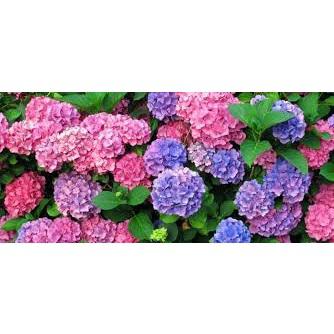Latin name: Hydrangea macrophylla
Family: Hydrangeaceae
We can find hydrangea plants in white, pink and blue. Did you know that the blue Hydrangea flower is artificial; the color is changed by alum, which if not used correctly the color that appears is faded pink. Alum is the common name for sulfate and potassium clay, where it changes the acidity of the soil, and consequently changes the color of the flowers. Hydrangea is an outdoor plant, but in winter it would be good to place it indoors to convert it from the cold. During the summer months the plants should be outdoors in a cool place.
Light – Position – TemperatureTheHydrangeas can be placed both inside our home and outside. As an indoor plant it should be placed in a bright and cool place away from windows and direct sunlight because its leaves can burn, while as an outdoor plant you should find a shady but bright place. The suitable temperature for hydrangea is between 10 and 15 degrees Celsius. At these temperatures the plant will flower for much longer than if it is in a hot and dry location.
Watering – Fertilization
Like all these flowering plants during their growth period they need more and more frequent watering. Allow the top of the soil to dry out before watering again, and always take care that the plant does not dry out. Drainage is very important for Hydrangeas, and we recommend large pots with large holes and several pieces of broken pot and mulch to help maintain the moisture required for growth. Fertilization plays a very important role in the growth of our plant, which is why weekly feeding is recommended. As mentioned above, the acidic soil causes the flowers to turn blue, so if you add alum the flowers will stay the colour you want, and will not return to their natural pink colour. Finally, the appropriate time for pruning is early spring, and we should remove the buds from the plant as well as all dead leaves.
Enemies – Diseases
Hydrangeas are quite susceptible to diseases caused by aphids, red spider mite, mildew and botrytis. Aphids are controlled with insecticides to locate them on the tender leaves of the plant. Also, the red spider mite, which is usually found on the underside of the leaves of the plant, is also controlled by insecticide after cutting off the affected leaves. Powdery mildew is a fungus that shows white powder on the leaves. In this case too, we have to cut off the diseased leaves and use a fungicide to remove it.
Finally, another fungus that attacks plants is Botrytis, which creates large wet spots on the leaves, and we should cut off the diseased leaves and spray them with dichloran solution.

